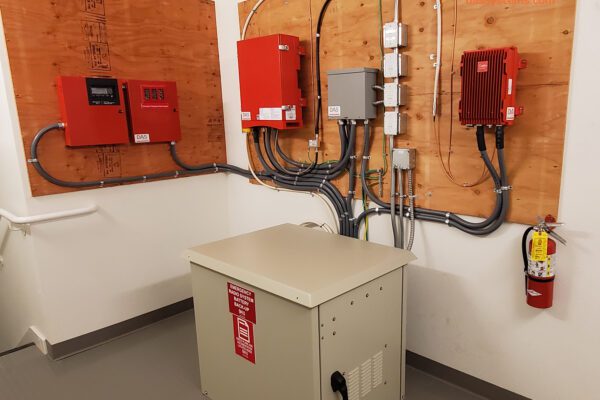What is the difference between Wi-Fi and Cellular DAS

Introduction
From the biggest city to the smallest village on earth, the 21st century brought the Internet to everyone, in an almost seamless way through their computers, businesses, or mobile phones.
With the increase in connectivity around us, we take a deep dive into understanding the differences between Cellular DAS systems vs Wi-Fi systems.
DAS Systems are designed to deliver radio signals from mobile carriers. In contrast, Wi-Fi helps transmit data from one device to another, mainly through internet connectivity via a provider.
Join us on this blog post as we shed some light on the fundamental aspects and differences of Cellular DAS vs Wi-Fi and their respective advantages:
Cellular DAS, in short:
Cellular DAS Systems are antennas, relays, and wires used to distribute cellular signals in a building structure. A DAS system is designed for delivering radio signals, be it carrier signals or mobile data, from the mobile carriers to users located throughout an area.
DAS systems can be installed in both new construction and retrofit projects, and are most commonly found at airports, hospitals, schools, hotels, arenas and businesses where there’s:
- A heavy and constant demand by a large number of users
- A large building structure where signal strength has difficulty penetrating
- Geographical constraints where carrier signals are weak, and Wi-Fi is unreliable or unavailable
Wi-Fi, a go-to for internet connection
On the other hand, Wi-Fi helps transmit data from one device to another. It uses radio waves to transmit and receive signals over short distances.
Wi-Fi connects devices like computers, smartphones, or other smart devices that need internet access through an antenna fixed at a high location such as a building or home.
A Wi-Fi system can be used for accessing the internet. Still, it does not have any special features compared with cellular data transmission networks, also referred to as CEDAS (Cellular eDAS).
Signal quality and added value
Cellular DAS enhances cellular signals, a great way to get better reception on your cell phone. Particularly when you’re inside a large building, working in a remote factory, or even outdoors.
It also works with voice calls, texting over Wi-Fi, and data services like 5G, 4G/LTE, and 3G/HSPA+.
DAS can be installed at any location where there are carrier antennas. Still, it’s most common in urban areas where many buildings need more coverage than an individual antenna can provide. Or throughout large buildings that depend on and require fast, reliable, and adequate connectivity.
Cellular vs Wi-FI, and the game of speed
Nowadays, cellular data is as fast or faster than Wi-Fi, which offers an average speed of 1Mbps.
This is because cellular technology is much more advanced than Wi-Fi, as the industry is constantly competing and progressing, hence offering more in terms of connectivity than the latter.
Cellular data and Wi-Fi are both valuable, but there are some critical differences between them.
- Cellular data service may be right for you if you’re looking for a consistent, simple way to access the internet without worrying about speed or reliability.
- However, if your primary concern is mobility and flexibility in design, then Wi-Fi could be more suitable.
- Cellular providers offer secure connections that use encryption technology.
- Protecting sensitive personal information from being intercepted by hackers or other unauthorized users.
- So it’s a safer option for users who don’t want their personal information shared with others online.
- In contrast, Wi-Fi doesn’t offer security measures and relies on a per-device basis of built-in encryption capabilities that allow users safe access to secure websites.
Conclusion
Whether you are in the market for a Wi-Fi system or a Cellular DAS, the difference is night and day. Both can be effective solutions for businesses in their own respect, but each retains its advantages and disadvantages.
It is, therefore, pivotal to identify your businesses’ current and foreseeable needs, and engage a DAS partner that can efficiently handle the responsibility of helping you optimize your connectivity strategy.
Contact us to learn how we can help you with value engineering from start to finish.
Keep up with our updates and announcements on LinkedIn and Facebook, and check out our other blog posts to learn more about our DAS solutions.




